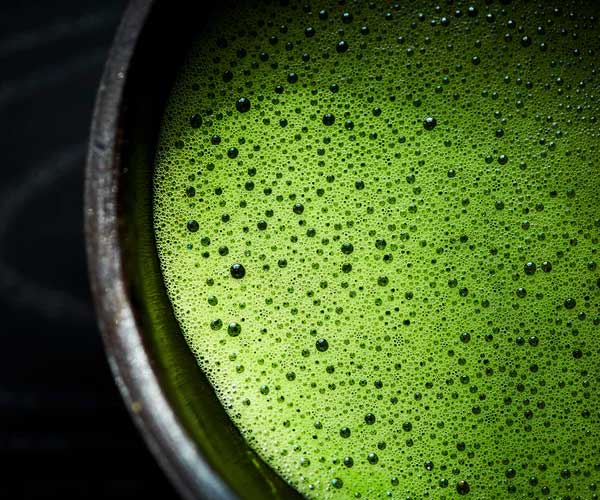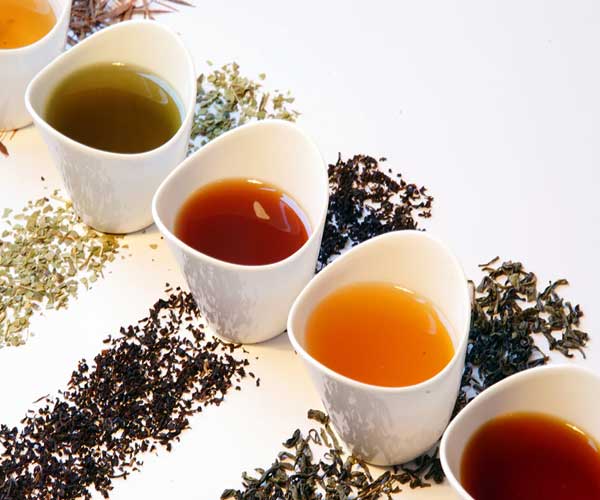Tea – a beverage that has united people all over the world for centuries. Among the numerous types of tea, green tea and matcha hold a special place. But how do they actually differ? In this article, we'll take you on an aromatic journey through the world of tea and explore the fascinating differences between green tea and matcha.
Green tea: classic elegance
Green tea, one of the oldest and most popular teas, fascinates not only with its variety but also with its elegant character. The production process plays a crucial role. After harvesting, the fresh tea leaves are gently steamed or roasted to prevent fermentation. This not only preserves the characteristic green color but also the tea's natural antioxidants.
Taste and aroma
The taste of green tea is characterized by a pleasant mildness and freshness. Grassy notes and a slight bitterness give it a diverse palette, ranging from floral and grassy to fruity nuances. This variety of flavors makes green tea a delight for every palate.
Benefits of green tea
Green tea is not just a beverage, but also a health treat. Here are some of its outstanding benefits:
- Rich in antioxidants: The antioxidants in green tea, especially catechins, provide strong protection against free radicals that can cause cell damage.
- Metabolism boost: Regular consumption of green tea can boost metabolism and thus support weight loss.
- Detoxification and skin health: The detoxifying properties of green tea can not only cleanse the body but also promote skin health.
- Natural Caffeine: The low caffeine content in green tea provides a gentle energy boost without the restlessness often associated with artificial caffeine.
Green tea is therefore not only a taste discovery, but also a contribution to a healthy lifestyle. From the very first cup, it transports you to a world of elegance and health, underscoring its timeless charm.
Matcha: The living energy bomb
Matcha, a fascinating representative of the tea world and the origin of the Japanese tea ceremony, presents itself as a vibrant energy boost. Unlike green tea, matcha is not served in leaf form, but rather as a fine powder made from ground tea leaves.
Taste and aroma
The taste of matcha is a sensory experience in itself. Robust, rich in umami, and accompanied by a pleasant sweetness, it unfolds into an intense flavor experience. The velvety texture adds a depth to the palate that matcha lovers will appreciate. The aroma is not only complex but also harmonious, making this tea a true delicacy.
Benefits of Matcha
Matcha is not just a drink, but a real superstar among teas that offers a variety of health benefits:
- Higher antioxidant content: Matcha surpasses green tea in its antioxidant content, particularly due to its high concentration of EGCG (epigallocatechin gallate).
- Concentration and relaxation: The amino acid L-theanine in matcha not only promotes concentration but also provides calming relaxation.
- Energy without caffeine side effects: Unlike artificial caffeine, matcha provides a gentle energy boost without jitters or energy spikes.
- Detox effect: By consuming the entire leaf, Matcha has a detoxifying effect and supports the cleansing of the body.
Matcha isn't just a beverage, it's a journey into a world of intensity and energy. The combination of flavor, aroma, and health benefits makes matcha a unique experience that goes far beyond the traditional tea experience.

Preparation: Tradition meets innovation
The preparation of green tea and matcha is not just a mere act, but a cultural blend of tradition and innovation. Both teas have their unique preparation methods that influence the character and experience of each sip.
Green tea preparation
Green tea preparation is a ritual that underscores the simplicity and diversity of this tea. Hot water is poured over the dried tea leaves and allowed to steep for a few minutes, depending on the variety. This method allows for the full capture of green tea's diverse aromas and nuances. The resulting tea reflects the creativity and variety of flavors hidden within green tea.
Green tea preparation is not just a process, but an art that can be refined according to personal taste. A longer brewing process, for example, can result in a more intense flavor, while a shorter brewing time emphasizes the freshness and lightness of the green tea. This flexibility makes the brewing process accessible for beginners and a consistently exciting experience for connoisseurs.
Matcha preparation
Matcha preparation, on the other hand, is a true ceremony deeply rooted in Japanese culture. The fine matcha powder is mixed with hot water to form a creamy paste. The traditional bamboo whisk, the chasen, is used to achieve the perfect consistency.
This preparation method underscores the appreciation for the product and the deep connection to nature. Matcha is not a drink to be consumed casually, but an experience that requires mindfulness and precision. The matcha ceremony symbolizes respect, tranquility, and harmony—values that are often lost in today's fast-paced world.
Matcha preparation is therefore not only a artisanal process, but also a spiritual experience. The time spent carefully blending the powder and the tranquil atmosphere created in the process make this preparation a meditative act.
The differences in brief
Green tea
- Production process: Steaming or roasting to prevent fermentation.
- Form: Dried tea leaves.
- Taste: Mild, fresh, with notes of grassiness and slight bitterness.
- Benefits: Rich in antioxidants, promotes metabolism, supports detoxification, contains natural caffeine.
Matcha
- Production process: Grinding the whole tea leaves into a fine powder.
- Form: Fine powder.
- Taste: Strong, umami-rich, sweet, velvety.
- Benefits: Higher antioxidant content, promotes concentration, energy boost without caffeine side effects, detox effect.
Conclusion: The art of tea variety
In the world of tea, green tea and matcha meet, representing two distinct worlds shaped by their history, production, and preparation. Green tea impresses with classic elegance and a broad spectrum of flavors, while matcha shines as a vibrant energy boost and the expression of a deep tradition.
Whether you choose mild green tea or strong matcha is ultimately a matter of personal taste and preference. Both teas enrich not only the palate but also the senses, inviting you on a fascinating journey through the world of tea. Immerse yourself in this timeless tradition and discover the art of not just drinking tea, but experiencing it.




Leave a comment
This site is protected by hCaptcha and the hCaptcha Privacy Policy and Terms of Service apply.